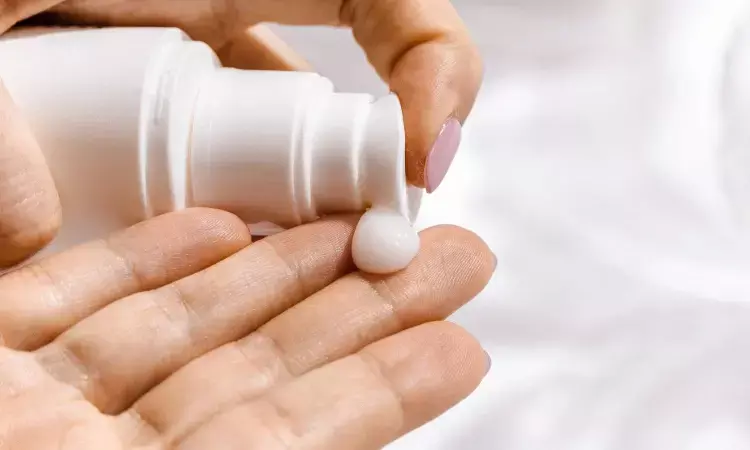- Home
- Medical news & Guidelines
- Anesthesiology
- Cardiology and CTVS
- Critical Care
- Dentistry
- Dermatology
- Diabetes and Endocrinology
- ENT
- Gastroenterology
- Medicine
- Nephrology
- Neurology
- Obstretics-Gynaecology
- Oncology
- Ophthalmology
- Orthopaedics
- Pediatrics-Neonatology
- Psychiatry
- Pulmonology
- Radiology
- Surgery
- Urology
- Laboratory Medicine
- Diet
- Nursing
- Paramedical
- Physiotherapy
- Health news
- Fact Check
- Bone Health Fact Check
- Brain Health Fact Check
- Cancer Related Fact Check
- Child Care Fact Check
- Dental and oral health fact check
- Diabetes and metabolic health fact check
- Diet and Nutrition Fact Check
- Eye and ENT Care Fact Check
- Fitness fact check
- Gut health fact check
- Heart health fact check
- Kidney health fact check
- Medical education fact check
- Men's health fact check
- Respiratory fact check
- Skin and hair care fact check
- Vaccine and Immunization fact check
- Women's health fact check
- AYUSH
- State News
- Andaman and Nicobar Islands
- Andhra Pradesh
- Arunachal Pradesh
- Assam
- Bihar
- Chandigarh
- Chattisgarh
- Dadra and Nagar Haveli
- Daman and Diu
- Delhi
- Goa
- Gujarat
- Haryana
- Himachal Pradesh
- Jammu & Kashmir
- Jharkhand
- Karnataka
- Kerala
- Ladakh
- Lakshadweep
- Madhya Pradesh
- Maharashtra
- Manipur
- Meghalaya
- Mizoram
- Nagaland
- Odisha
- Puducherry
- Punjab
- Rajasthan
- Sikkim
- Tamil Nadu
- Telangana
- Tripura
- Uttar Pradesh
- Uttrakhand
- West Bengal
- Medical Education
- Industry
Low-Dose IL-2 Therapy Improves Disease Control in Bullous Pemphigoid Patients, suggests research

A recent study published in the Journal of the American Academy of Dermatology demonstrated that low-dose IL-2 therapy may be an effective treatment for patients with moderate to severe bullous pemphigoid (BP), a chronic autoimmune blistering disorder. The research assessed the response to IL-2 therapy, suggests that it could significantly shorten the time required to achieve disease control when combined with standard corticosteroid treatment.
Bullous pemphigoid is characterized by the formation of large, fluid-filled blisters primarily affecting the elderly. Current treatments primarily rely on systemic corticosteroids, which can lead to serious side effects, especially when used long-term. The reduction of Regulatory T cells (Tregs) in both the peripheral blood and skin lesions of BP patients has been identified as a critical factor in the disease's pathogenesis. Given that low-dose IL-2 therapy can selectively stimulate Tregs, this study wanted to find if it could offer a novel therapeutic approach for BP.
The study included a total of 43 patients with moderate to severe BP who were divided into 2 groups. Both groups received systemic corticosteroids, with the dosage tailored to disease severity of 0.5 mg/kg/day for moderate cases and 1.0 mg/kg/day for severe cases. The control group received only corticosteroids and allowed immunosuppressants, while the treatment group received an additional low-dose IL-2 therapy (half a million IU administered subcutaneously every other day for eight weeks).
The primary outcome measured was the time required to achieve disease control. The treatment group, which received IL-2, reached disease control in an average of 7.60 days, significantly faster than the control group, which took an average of 10.43 days (p=0.008). This reduction in time is clinically significant, suggesting that low-dose IL-2 therapy not only hastens the healing process but also potentially reduces the overall burden of corticosteroid use.
Also, the study found that the total amount of corticosteroids required by the treatment group was markedly lower when compared to the control group. No serious infections were reported in the IL-2 group which addresses the concerns about the safety of this approach. The findings of the study offer strong evidence that low-dose IL-2 therapy could improve current BP treatment protocols by reducing the need for high-dose corticosteroids and achieving faster disease control. Overall, this study illuminates the potential of IL-2 therapy as a promising adjunct in the management of bullous pemphigoid.
Reference:
Xue, R., Li, G., Zhou, Y., Wang, B., Xu, Y., Zhao, P., Teng, L., Zheng, J., Liu, H., Ji, S., Elston, D. M., & Liang, Y. (2024). Efficacy and safety of low-dose Interleukin-2 in the treatment of moderate to severe bullous pemphigoid: a single center perspective-controlled trial. In Journal of the American Academy of Dermatology. Elsevier BV. https://doi.org/10.1016/j.jaad.2024.08.033
Neuroscience Masters graduate
Jacinthlyn Sylvia, a Neuroscience Master's graduate from Chennai has worked extensively in deciphering the neurobiology of cognition and motor control in aging. She also has spread-out exposure to Neurosurgery from her Bachelor’s. She is currently involved in active Neuro-Oncology research. She is an upcoming neuroscientist with a fiery passion for writing. Her news cover at Medical Dialogues feature recent discoveries and updates from the healthcare and biomedical research fields. She can be reached at editorial@medicaldialogues.in
Dr Kamal Kant Kohli-MBBS, DTCD- a chest specialist with more than 30 years of practice and a flair for writing clinical articles, Dr Kamal Kant Kohli joined Medical Dialogues as a Chief Editor of Medical News. Besides writing articles, as an editor, he proofreads and verifies all the medical content published on Medical Dialogues including those coming from journals, studies,medical conferences,guidelines etc. Email: drkohli@medicaldialogues.in. Contact no. 011-43720751


